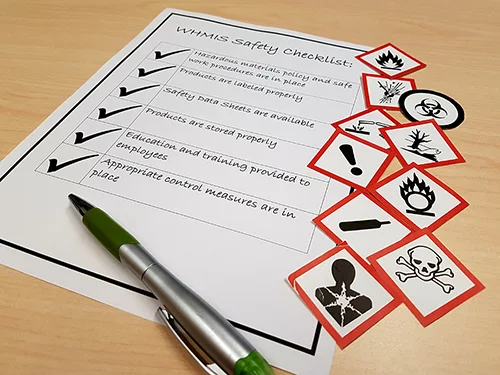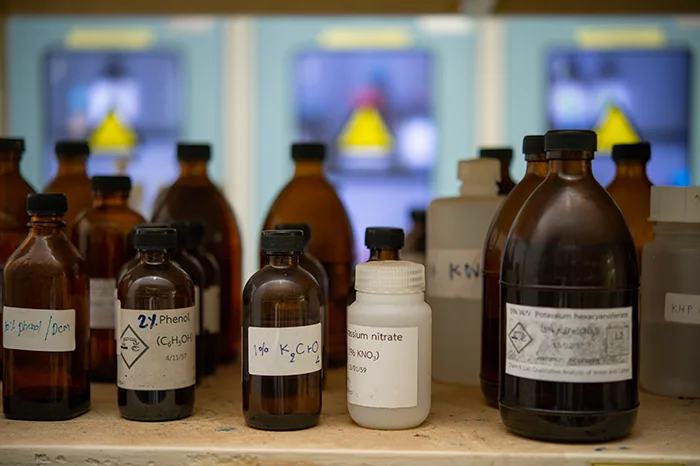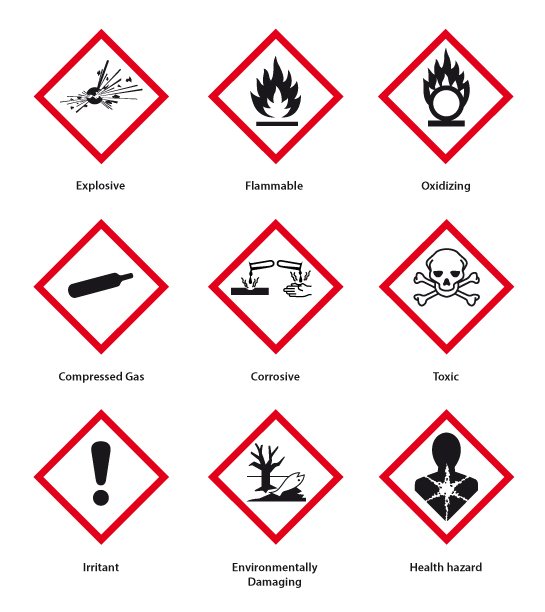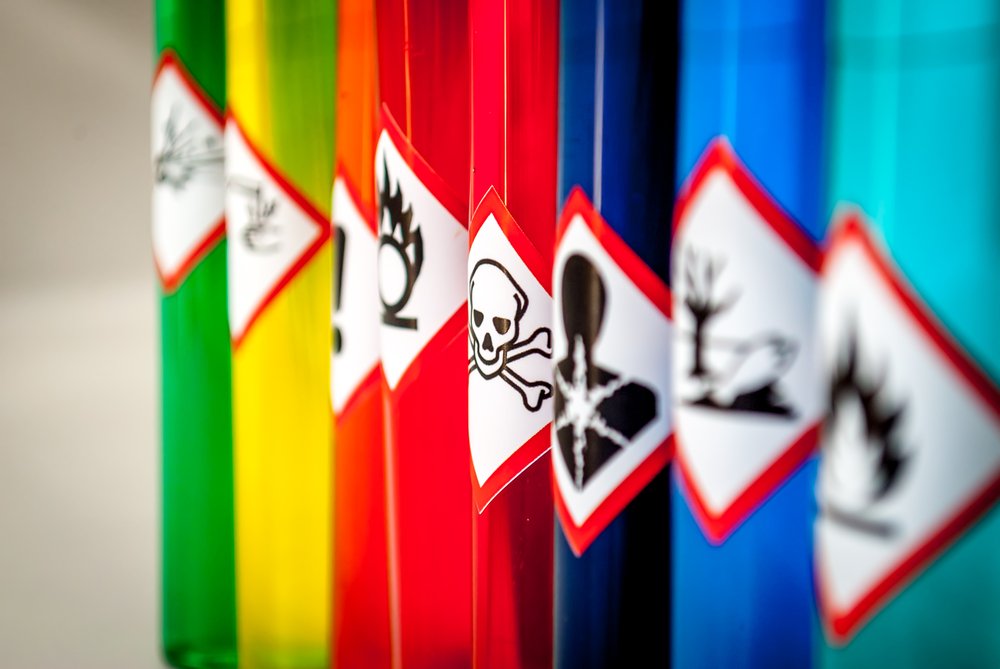Every business — regardless of size or industry — must comply with health and safety laws. For most businesses, the COSHH Regulations (2002) play a major role in health and safety procedures. If you’re not sure exactly what COSHH is or how to comply with these regulations, read this guide to learn everything you need to know.
What Is COSHH?
COSHH is short for “Control of Substances Hazardous to Health”, a set of health and safety regulations. Under these regulations, businesses are required by law to protect workers from potentially harmful substances.
COSHH stands for “Control of Substances Hazardous to Health”. COSHH is a set of health and safety regulations that describe how hazardous substances should be handled in the workplace. Under these regulations, businesses are required by law to protect workers from potentially harmful substances.
So employers must take steps to monitor and manage risks, implement control measures and keep exposure to hazardous substances to a minimum. Compliance with health regulations like COSHH is an important way to minimise risk for both your business and employees.

Who Must Comply With COSHH Regulations?
Regardless of which industry your business operates in, the chances are that COSHH Regulations will apply to your company. COSHH Regulations apply to all employers who use, store, or handle hazardous substances in the workplace. The regulations also apply to self-employed individuals who work with hazardous substances.
Even businesses in the least dangerous industries must control substances that could be harmful to employees. For example, everyday products, such as cleaning agents, can be considered hazardous. This means companies in a wide range of industries are affected, including manufacturing, construction, healthcare, agriculture, and many others.
What Does COSHH Mean For Companies?
In 2021, an estimated 12,000 workers in the UK died from lung diseases linked to exposure at work. COSHH aims to keep employees out of harm’s way and reduce the number of work-related injuries and health conditions across the UK.
Breaching these regulations puts your workers at risk of harm and ill health, and non-compliance is also a crime that could result in prosecution. So if you employ anyone who might come into contact with hazardous substances, it’s essential you fully understand the COSHH Regulations and how you can comply and keep your workforce safe from harm.
Which Hazardous Substances Are Covered By COSHH?
Before you can meet the COSHH requirements, you need to know what substances to protect your workers from. Hazardous substances can take different forms, including the following:
- Chemicals
- Fumes
- Dust
- Vapour
- Mist
- Nanoparticles
- Gases
- Fibres
- Germs (biological agents, including bacteria and viruses)
Any substance with the potential to cause harm can be considered hazardous. They may be classed as an irritant, corrosive, toxic or a health hazard depending on the danger they present.
Dangerous substances can cause health issues when they come into contact with the skin or eyes and when they’re inhaled, swallowed or injected. While it’s unlikely your employees will inject dangerous substances, they can enter the body’s bloodstream through cuts and open wounds.
Which Hazardous Substances Are Not Covered By COSHH?
Other types of hazardous substances include lead, asbestos and radioactive elements, but COSHH Regulations don’t cover these. That’s not to say businesses shouldn’t protect their employees from these materials — the only reason COSHH doesn’t include these substances is they have their specific regulations you need to follow.

What Are the COSHH Symbols?

- Oxidising: These substances interact with other chemicals and may cause a fire or explosion. Common oxidising substances are oxygen, hydrogen peroxide and halogen elements.
- Compressed Gas: This indicates the gas is stored under pressure. Many people overlook the dangers of compressed gas, but it can be a very hazardous substance. If compressed gas is heated — or if the tank isn’t properly maintained — it may explode. Refrigerated compressed gas can cause cryogenic burns if it comes into contact with the skin.
- Corrosive: These substances will destroy living tissue and other substances if there is contact. It can damage materials and cause severe burns and eye damage.
- Toxic: Toxic materials can damage a person’s health, even at low levels of exposure. If a toxic substance comes into contact with the skin or is inhaled, it may be fatal. Examples of toxic substances include mercury and chlorine gas.
- Health Hazard: This symbol also means “long-term health hazard”. This symbol indicates that a substance might cause serious health issues such as damaged organs, cancer and genetic defects.
Who Can Carry Out A COSHH Risk Assessment?
A COSHH (Control of Substances Hazardous to Health) Risk Assessment must be carried out by someone considered “competent”. There is no specific training designated by the Health and Safety Executive (HSE), but the person nominated must have the necessary knowledge, training, and experience to identify and assess the risks posed by hazardous substances in the workplace.
This could be a safety manager, supervisor, or other competent person designated by the employer. Many third-party companies can be hired to complete a COSHH Risk Assessment, but there is no legal obligation to use a third party.
The person conducting the assessment must be familiar with the specific substances and processes involved in the workplace, as well as the relevant health and safety regulations. The assessment should be reviewed periodically to ensure that it remains accurate and up-to-date.
If you’re unsure if you need to complete a COSHH Risk Assessment, you can download our free risk assessment template using the link below. There’s no obligation, simply put in your email to get our COSHH Risk Assessment template sent straight to your email address.
Free COSHH Risk Assessment Template
Do you or your team handle hazardous chemicals at work?
A COSHH Risk Assessment helps to create a safe working environment. Enter your details for a free template in your inbox.
By submitting this form you confirm you are happy to be contacted by CHAS in accordance with our Privacy Policy
How To Comply With COSHH Regulations In 7 Steps
In this section, we’ll walk you through the seven steps you must follow to comply with COSHH Regulations.
1. Identify And Assess Risks
The first step to complying with the regulations is a COSHH Risk Assessment. This involves identifying and assessing hazardous substance risks in the workplace.
Often, products will contain labels with COSHH symbols indicating whether or not they’re hazardous. However, identifying harmful substances isn’t always as easy as spotting labels on products. You will need to walk around your workplace to identify hazards, consider any equipment that might produce hazardous substances and consult the HSE web page for your industry to find examples of dangerous substances to consider.
Once you have identified risks, you will need to record how these substances might cause harm, how likely they are to cause harm and the jobs and tasks that may lead to exposure.
2. Prevent And Control Exposure To Hazardous Substances
Preventing — or at least reducing — exposure to hazardous substances is one of the main requirements of COSHH. Controlling exposure to hazardous materials can make your workplace a safer place. As an employer, you are responsible for implementing control measures to prevent or reduce your employees’ exposure to risks. Here are some of the steps you must take to avoid exposure:
Substitute Dangerous Substances For Less Hazardous Ones
One of the best ways to prevent exposure to hazardous substances is to consider alternative substances that present less risk.
Use Control Equipment
Control equipment includes ventilation systems, extraction systems, personal protective equipment (PPE), and decontamination equipment. Such equipment can reduce exposure to airborne hazards such as chemicals, germs and dust, reduce the risk of contamination, and prevent accidents when handling or working with dangerous substances.
Provide Personal Protective Equipment
Sometimes working with hazardous substances is unavoidable, but in such cases, you should provide, replace and pay for any personal protective equipment employees need to stay safe while working. Types of PPE include respirators, protective gloves, clothing, footwear and eyewear. You are responsible for ensuring the PPE effectively protects employees from any harm.
Supervise The Use Of Hazardous Substances
Supervision can prevent accidents involving hazardous substances. Supervisors must ensure health and safety procedures are followed and offer advice when it comes to handling or working around dangerous substances.
3. Monitor The Control Measures
Once control measures are in place, COSHH requires employers to monitor how effective these measures are. Methods of monitoring can include recording any accidents or injuries that occur despite control measures, testing for bacteria on surfaces, and monitoring air quality.
If your control measures prove successful in reducing or preventing exposure to harmful substances, you can show you’ve taken the necessary steps to minimise risk. Regular monitoring will also help you make sure your control measures stay up-to-date and relevant.
4. Monitor Employees’ Health
As well as monitoring the control measures around the workplace, you may choose to keep an eye on your employees’ well-being with health surveillance. Health checks, tests, examinations and questionnaires can provide data about employees’ health and can help you detect and evaluate health hazards and control measures.
Health surveillance is a legal requirement for some employees—if they are frequently exposed to health risks, you should monitor their well-being. But even when health surveillance is optional, collecting valuable information about how employees are affected by the work environment can be a good idea.
5. Provide Training On Hazardous Substances
It is your responsibility as an employer to provide training and information for your employees about hazardous substance control. Employees should have access to the COSHH Risk Assessment, information about what the workplace hazards are and training on how to stay safe when working with hazardous substances.
6. Prepare For Accidents And Emergencies Involving Hazardous Substances
While COSHH aims to prevent accidents, you will need to have a plan in place to deal with foreseeable accidents and emergencies. You’ll need the right equipment, procedures, and people on-site to deal with emergencies such as casualties and spills of hazardous substances. If dangerous products are spilt, you will also need to have arrangements in place to deal with any waste created to prevent this from causing any further accidents.
7. Review Your Workplace Exposure Limits
Certain substances are known to cause cancer or asthma or permanently change genetic material. These substances are classed as carcinogens, asthmagens or mutagens. When working with such substances, the guidance from HSE is that “exposure must be controlled to as low as is reasonably practicable (ALARP)”.
If it is impossible to restrict exposure to a hazardous substance to zero, ensure you do comply with the UK’s approved Workplace Exposure Limit (WEL) for a given substance. These occupational exposure limits are approved by HSE. WELs are expressed by measuring the concentrations of hazardous substances in the air, averaged over a set time period.
Free Asbestos Checklist Download
Use our free Asbestos Checklist download will ensure your teams are health and safety compliant.
Enter your details and receive your free Asbestos Checklist download in your inbox.
By submitting this form you confirm you are happy to be contacted by CHAS in accordance with our Privacy Policy
What Are COSHH Employee Responsibilities?
Most of COSHH’s requirements and responsibilities fall on employers. However, employees can share some of the responsibility by ensuring they follow health and safety procedures and implement COSHH control measures.
Employees should keep up to date with provided training and information regarding risk management and carry out tasks with risk prevention in mind. They must use any control equipment provided — such as PPE — where necessary and should take responsibility for keeping the workplace clean and free from germs. As well as ensuring their own safety, employees can also help colleagues and contractors stay safe when working with hazardous substances.
Want to find out more about becoming a CHAS Client?
Find out how to reduce risk in your supply chain and monitor, report on, and improve compliance with CHAS.
Our brochure provides you with an overview of CHAS client services and guidance on how to become a client.



